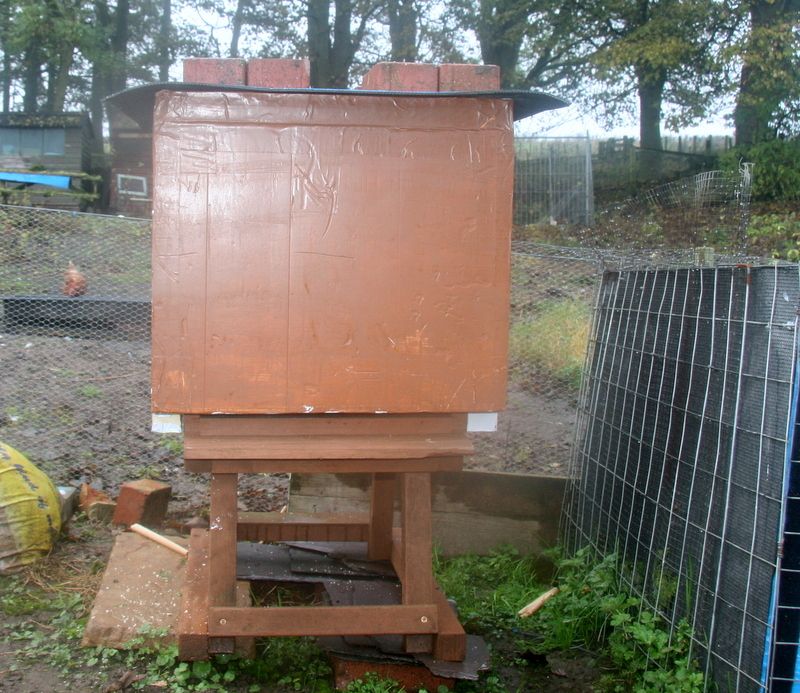Poly Hive
Queen Bee
- Joined
- Dec 4, 2008
- Messages
- 14,097
- Reaction score
- 405
- Location
- Scottish Borders
- Hive Type
- National
- Number of Hives
- 12 and 18 Nucs
Imagine waking up on a cold raw morning. The duvet is lovely and warm aound you so you snuggle down for a few moments more cosiness. Bliss!
The room is warm as you invested in the 300mm of insulation in the loft and so as the boiler purrs you know your precious heat is not blowing out the eaves.
Bees like to be cosy too. which is why they employed the thermal qualities of hollow trees for more years then we can imagine.
Which explains the success of the poly hives. Bees enjoy the warmth and consequently behave differently in them.
Swarms will start drawing out foundation right next to the hive wall as it is the warmest place for the wax workers to get going.
The bottom line though is will a colony produce more from a poly than a timber unit of the same size and comparing like for like bees. My experience is yes for sure.
If you look at the WBC and Glen management in the past they were run iwth quilts, usually an old hessian sack as a crown board, and above them literally an ould bed quilt or a pile of blankets. That kept in the warmth in the "attic" and the air gap in the hive sides kept the bees warm in that direction. The poly in the single wall removes the issues of double wall units but retains the benefits.
PH
The room is warm as you invested in the 300mm of insulation in the loft and so as the boiler purrs you know your precious heat is not blowing out the eaves.
Bees like to be cosy too. which is why they employed the thermal qualities of hollow trees for more years then we can imagine.
Which explains the success of the poly hives. Bees enjoy the warmth and consequently behave differently in them.
Swarms will start drawing out foundation right next to the hive wall as it is the warmest place for the wax workers to get going.
The bottom line though is will a colony produce more from a poly than a timber unit of the same size and comparing like for like bees. My experience is yes for sure.
If you look at the WBC and Glen management in the past they were run iwth quilts, usually an old hessian sack as a crown board, and above them literally an ould bed quilt or a pile of blankets. That kept in the warmth in the "attic" and the air gap in the hive sides kept the bees warm in that direction. The poly in the single wall removes the issues of double wall units but retains the benefits.
PH
Last edited:


















































